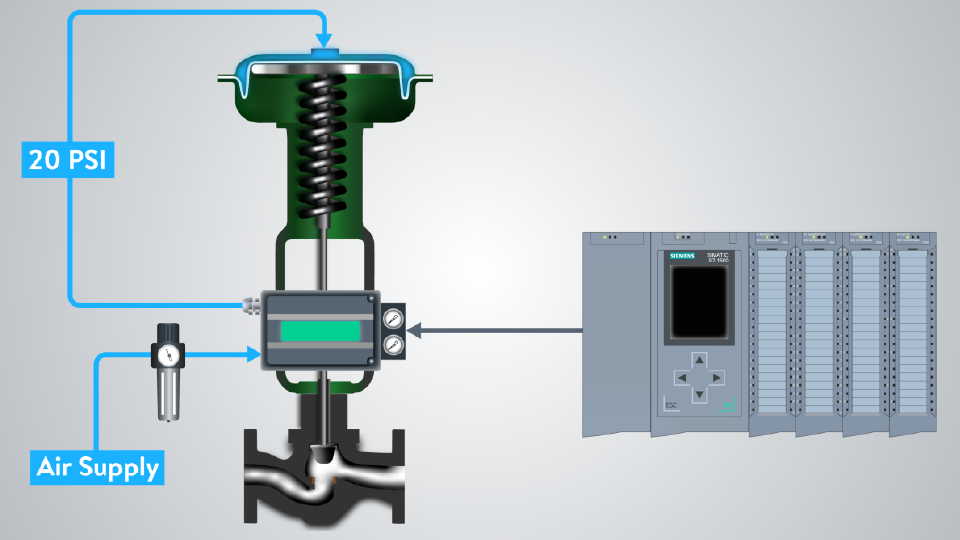Reliable Control Valves: Key Elements for Effective System Management
Reliable Control Valves: Key Elements for Effective System Management
Blog Article

Maximize Energy Savings and Convenience With Advanced Building Automation Controls
In the world of contemporary architecture and center management, the assimilation of sophisticated structure automation regulates stands as an essential improvement. By utilizing the power of automation, buildings can adjust, react, and advance in means that were once unbelievable.
Power Performance Benefits
Energy effectiveness advantages can dramatically decrease energy consumption and functional expenses in structures. By implementing energy-efficient practices and modern technologies, building owners and drivers can attain substantial financial savings while additionally contributing to environmental sustainability. Among the main advantages of enhancing power performance in structures is the decrease of energy costs. Energy-efficient systems, such as advanced building automation controls, can enhance making use of sources like air conditioning, heating, and illumination, bring about reduced power expenditures over time.
Additionally, enhanced energy performance can extend the lifespan of building tools and systems. By running much more successfully, a/c systems, lighting fixture, and other structure parts experience less damage, leading to decreased maintenance and replacement costs. Additionally, energy-efficient structures usually regulate greater residential property worths and rental rates, offering long-lasting monetary advantages to proprietors.
Moreover, energy performance can improve resident comfort and performance. Correctly managed indoor settings with optimum illumination and thermal conditions produce a more helpful and pleasant office, bring about boosted employee contentment and efficiency. Generally, the energy performance advantages related to advanced structure automation controls are complex, including cost savings, ecological stewardship, and occupant wellness.
Enhanced Convenience Control
Enhancing convenience control in structure atmospheres needs a sophisticated assimilation of innovative automation systems for optimal occupant wellness. By making use of advanced structure automation controls, facilities can tailor the indoor setting to meet the details demands and preferences of occupants. control valves.
Boosted convenience control surpasses fundamental temperature adjustments. It consists of features such as tailored settings, tenancy sensors, and natural light use to create a responsive and vibrant atmosphere. By incorporating these sophisticated controls, structures can not only boost comfort however also enhance power performance by maximizing system operations based upon actual occupancy and usage patterns. Ultimately, prioritizing owner convenience via advanced automation systems brings about a more delightful and healthier interior atmosphere.
Functional Efficiency Improvements

Moreover, the execution of real-time monitoring and analytics tools enables structure drivers to identify energy inefficiencies and operational abnormalities quickly. By continuously monitoring power use patterns and system performance metrics, changes can be made in real-time to enhance energy consumption and make certain peak operational performance. control valves. In addition, integrating demand action techniques right into building automation controls can better improve functional efficiency by dynamically changing energy usage based on grid conditions and prices signals
Indoor Environment Optimization
Efficient interior environment optimization is a basic aspect of building automation controls, making sure owners' comfort and wellness while taking full why not look here advantage of power financial savings. By utilizing innovative sensors and controls, developing automation systems can continually keep track of and adjust temperature, moisture levels, air high quality, and air flow to develop an optimal indoor environment. Keeping comfy and regular problems not just improves owner satisfaction but also increases efficiency and general wellness.
Interior environment optimization also plays a crucial role in energy effectiveness. By fine-tuning ventilation, heating, and cooling systems based upon real-time data and occupancy patterns, developing automation controls can dramatically minimize energy usage - control valves. Applying strategies such as demand-controlled air flow and thermal zoning can assist minimize energy waste while ensuring that each area of the structure gets the required conditioning.

Sustainable Setting Production
Building automation controls not only enhance indoor climate conditions for energy performance and owner comfort yet likewise lay the structure for producing a lasting setting with calculated monitoring of sources and systems. By integrating sophisticated building automation innovations, such as sensors, actuators, and smart software, centers can readjust and monitor power use in real-time to reduce waste and minimize their carbon footprint. These systems enable predictive upkeep, recognizing potential concerns before they intensify and optimizing tools efficiency to boost long life and performance.
Furthermore, sustainable setting production extends past power monitoring to incorporate water preservation, waste reduction, and interior air top quality renovation. Structure automation controls can manage water usage, identify leakages, and ensure correct waste disposal techniques, adding to total sustainability initiatives. In addition, by managing and keeping an eye on air flow and purification systems, these innovations enhance occupant wellness and efficiency while reducing energy usage associated with a/c operations.
Final Thought
To conclude, advanced structure automation controls deal significant advantages in terms of energy cost savings, convenience control, functional performance, indoor climate optimization, and developing a lasting setting. By implementing these controls, buildings can attain optimum efficiency while lowering power consumption and improving resident comfort. It appears that the use of advanced automation innovation is critical in improving structure performance and creating a more lasting future.
Power performance advantages can dramatically lower energy intake and operational prices in buildings. Generally, the power efficiency benefits connected with sophisticated structure automation controls are complex, encompassing click to read more expense financial savings, ecological stewardship, and resident wellness.
In addition, incorporating demand action strategies right into structure automation controls can additionally enhance operational effectiveness by dynamically adjusting power usage based on grid conditions and pricing signals.
Building automation manages not just enhance indoor climate conditions for energy performance and owner comfort however additionally lay the structure for developing a sustainable atmosphere via calculated management of systems and resources.In final thought, advanced structure automation controls offer considerable benefits in terms of energy savings, comfort control, operational performance, interior environment optimization, and creating a sustainable atmosphere.
Report this page